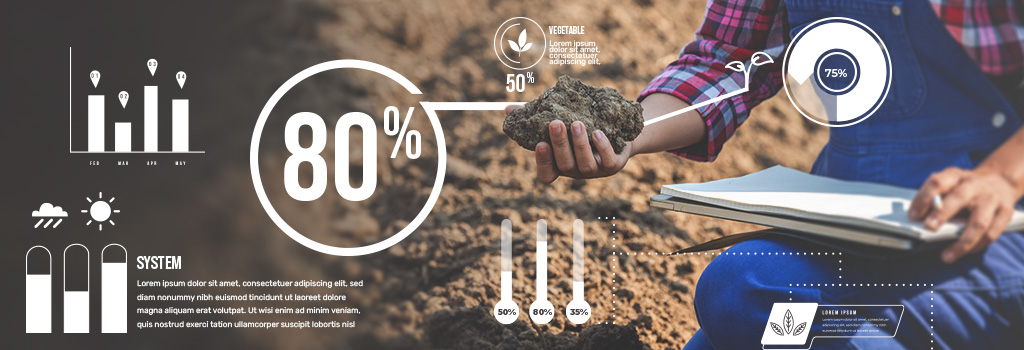Brownfield remediation projects are often confronted with the challenge of what is known as ‘abnormals’ in soils, which can lead to significant contractual complications. Abnormals, referring to “unexpected or unforeseen conditions within the soil”, poses a considerable risk to project timelines, budgets, and contractual agreements. Understanding the implications of abnormal and proactively addressing contractual challenges is essential for ensuring the successful execution of brownfield remediation initiatives.
This blog delves into the core complexities surrounding soil abnormalities and the consequential contractual challenges in brownfield projects, offering insightful solutions to safeguard project timelines, budgets, and contractual agreements. By dissecting the nuanced implications of soil abnormalities and exploring proactive strategies, this blog equips stakeholders with the essential knowledge and tools needed to navigate the terrain of brownfield remediation with resilience and efficacy.
How “soil abnormals” can cause contractual problems in remediation projects?
Abnormals in brownfield sites often include contamination issues, hidden structures, or historical artefacts that were not identified during the initial site assessments. Their unpredictable nature makes it difficult for contractors and clients to allocate risks and responsibilities effectively.
The presence of abnormals in soils can encompass a range of issues, including unforeseen contamination, geotechnical complexities, and unidentified underground structures, which even the most detailed site investigations may not uncover.
These conditions, when encountered during the remediation process, can lead to substantial deviations from the initial project scope and cost estimates, consequently impacting contractual agreements between stakeholders.
Such deviations often result in disputes over additional costs, project delays, and the allocation of responsibilities, necessitating a comprehensive contractual framework to mitigate the associated risks effectively.

1. Lack of proactive contractual provisions
One of the primary contractual problems arising from abnormals in soils is the lack of clear provisions addressing unforeseen site conditions in contractual agreements. In the absence of explicit clauses outlining the procedures for managing abnormals, disputes may arise regarding the allocation of additional costs and responsibilities for remediation efforts.
Solution: incorporating well-defined contractual provisions
To mitigate such conflicts, it is imperative to incorporate well-defined contractual provisions, such as force majeure clauses and contingency plans, that account for unforeseen conditions and outline the protocols for addressing abnormals during the remediation process.
2. Discrepancies in risk allocation between contracting parties
Moreover, discrepancies in risk allocation between contracting parties can exacerbate contractual complications associated with abnormals in soils. Inadequate risk assessments and ambiguous risk allocation provisions can lead to disagreements over the responsibility for managing and mitigating the impacts of abnormals.
Solution: conducting comprehensive risk assessments
To avoid such disputes, it is crucial to conduct comprehensive risk assessments and clearly define the roles and responsibilities of each party in managing unforeseen soil conditions. Implementing a fair and balanced risk-sharing mechanism through the contractual agreement can foster collaborative efforts and ensure effective risk management throughout the brownfield remediation project.
3. Lack of effective communication and transparency among stakeholders
The contractual problems stemming from abnormals in soils also highlight the significance of effective communication and transparency among stakeholders. The lack of open communication channels and the failure to promptly report and address abnormal conditions can lead to mistrust and disputes among project participants.
Solution: Establishing a robust communication framework
Establishing a robust communication framework, including regular project updates, comprehensive reporting mechanisms, and collaborative problem-solving approaches, fosters transparency and facilitates proactive decision-making, thereby mitigating the contractual risks associated with abnormals.
It is crucial for project parties to enter early contractor involvement, utilising the contractor’s experience in delivering these schemes as part of the early planning process. Have clear, well-drafted contracts specifying the handling of abnormal. Engage in open communication to address issues as they arise. Utilize the flexibility of contractual mechanisms to manage the financial and time implications of abnormals.

How do we manage other complexities arising from abnormals?
Implementing comprehensive risk-sharing mechanisms and performance-based incentives within the contractual framework can incentivize collaborative problem-solving and promote a mutually beneficial approach to managing abnormals during the remediation process.
By aligning incentives with project objectives and outcomes, stakeholders are motivated to work together effectively, share responsibilities, and actively contribute to resolving unforeseen challenges.
This collaborative approach fosters a culture of transparency, trust, and proactive problem-solving, ultimately leading to more successful outcomes in managing abnormals and mitigating their associated complexities. Let’s delve in deeper:
1. Pay attention to contract types and procurement strategy
The selection of appropriate contract types and procurement strategies plays a pivotal role in managing contractual complexities arising from abnormals in soils. Opting for flexible contract arrangements, such as target cost contracts or cost-reimbursable contracts, can provide the necessary contractual flexibility to accommodate unforeseen conditions and facilitate equitable cost-sharing mechanisms.
The most common contractual forms are the NEC4 and JCT contracts. NEC4 encourages collaboration and early engagement through early warning notices, allowing parties to proactively manage unexpected issues through its ‘compensation event’. JCT contracts place the risk of unforeseen conditions on the contractor. Therefore, it is essential for contractors to have robust contingency plans and in-depth risk assessments to mitigate any financial impact.
2. Incentivising collaboration
Integrating appropriate risk-sharing mechanisms and performance-based incentives within the contractual framework can incentivise collaborative problem-solving and promote a mutually beneficial approach to managing abnormalities during the remediation process.
Conclusion
Addressing the contractual problems associated with abnormality in soils necessitates a proactive and collaborative approach among stakeholders, underpinned by robust contractual frameworks, effective risk management strategies, and transparent communication channels. By implementing comprehensive contractual provisions, clear risk-sharing mechanisms, and proactive communication protocols, stakeholders can navigate the complexities of brownfield remediation projects, mitigate contractual disputes, and ensure the successful and timely completion of remediation efforts, even in the presence of unforeseen soil conditions.